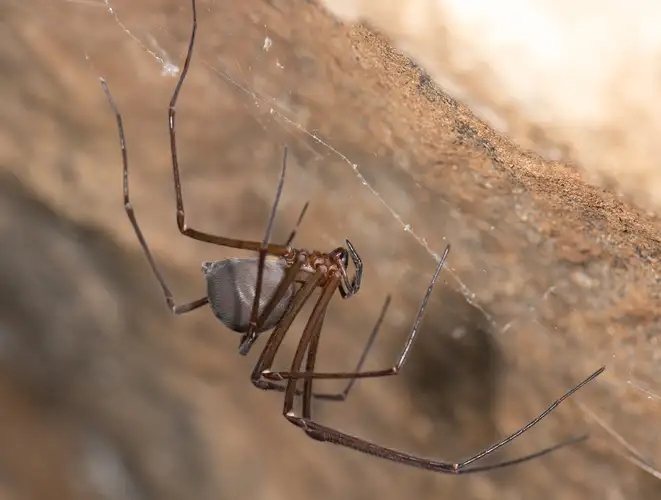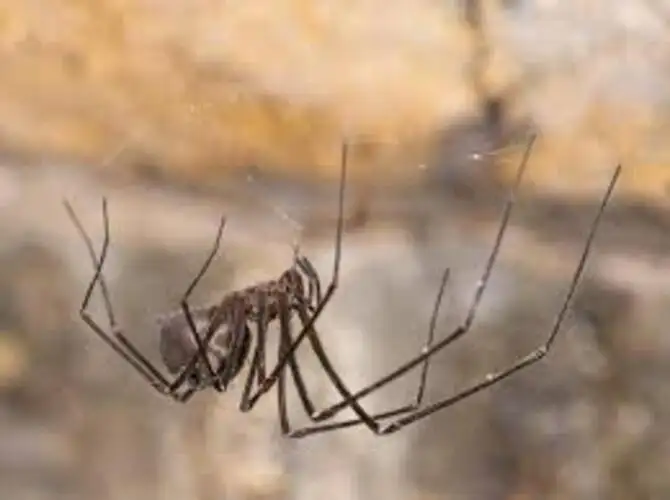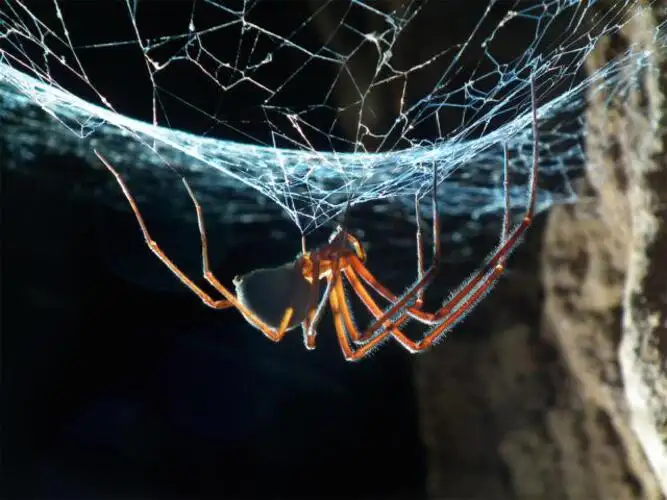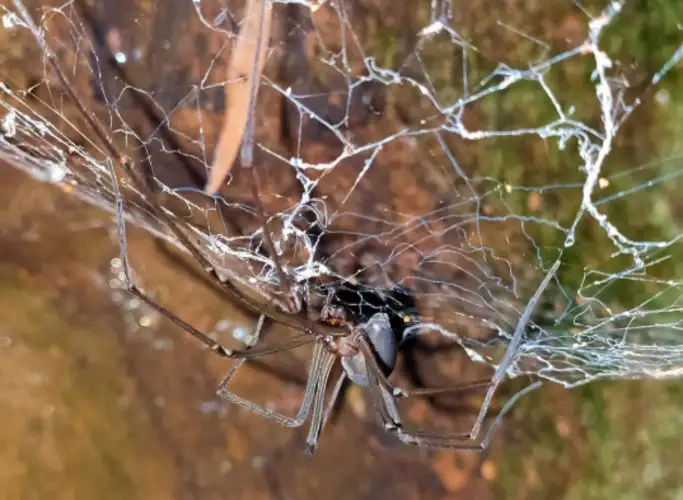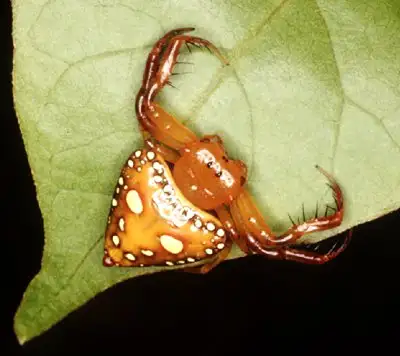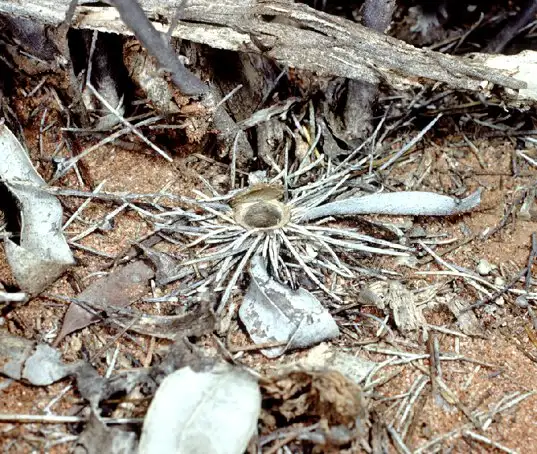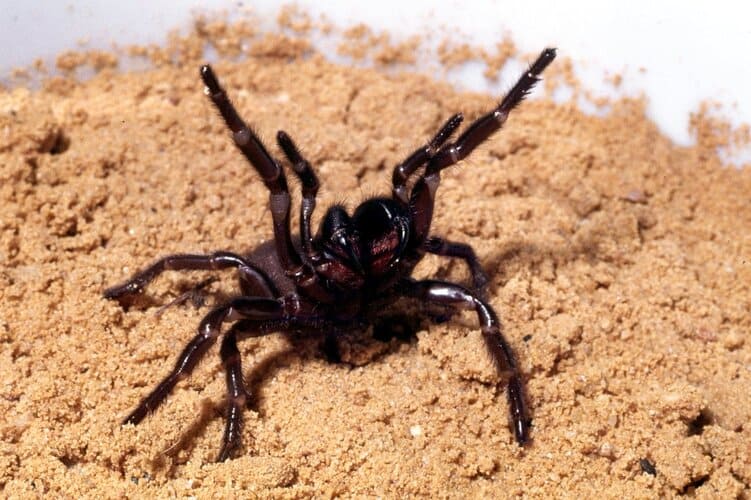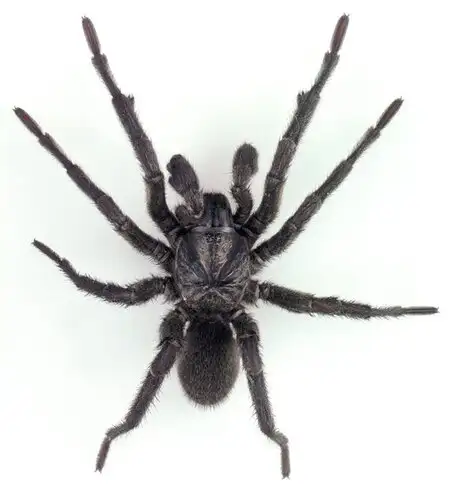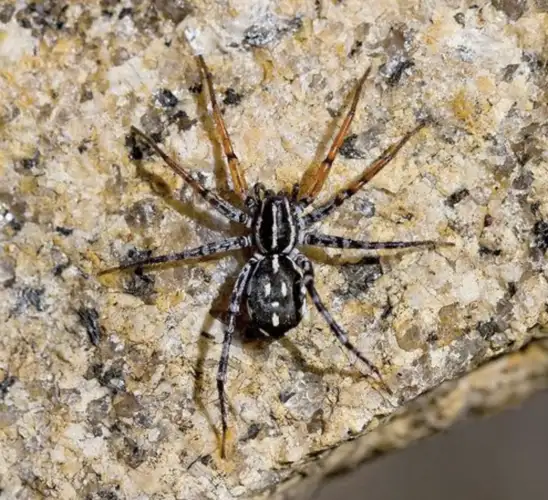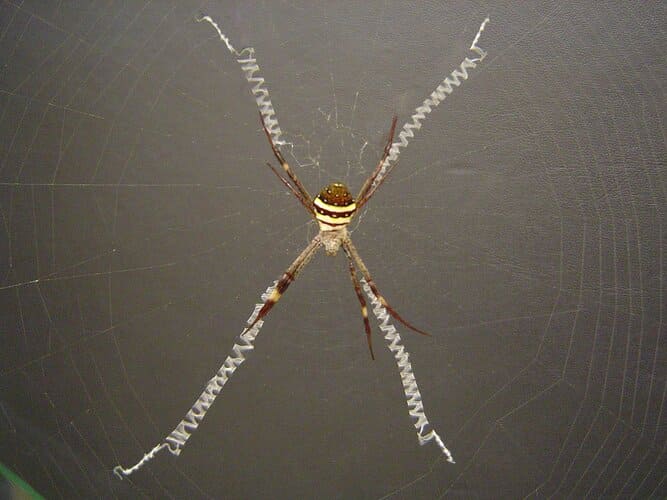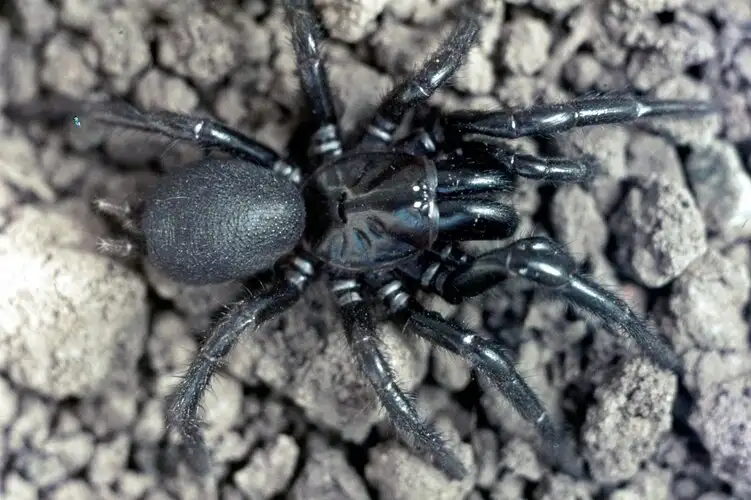Tasmanian Cave Spider
IUCN
LCBasic Information
Scientific classification
- name:Tasmanian Cave Spider
- Scientific Name:Hickmania troglodytes
- Outline:Arthropoda
- Family:Hickmaniidae Hickmania troglodytes
Vital signs
- length:Adult body length about 13–18 millimetres with leg span exceeding ten centimetres in large individuals
- Weight:Medium sized cave dwelling spider with body mass typically in the hundreds of milligrams depending on size and sex
- lifetime:Believed to live for several years in stable cave environments with slow population turnover
Feature
Endemic Tasmanian cave and forest spider with very long legs and elongated spinnerets that builds large three dimensional webs on cave ceilings and rock walls.
Distribution and Habitat
Limestone caves, moist gorges and cool temperate forests on the island of Tasmania in southern Australia.
Appearance
Dark to reddish brown spider with a narrow body, extremely long legs and extended spinnerets at the tip of the abdomen, giving it a distinctive elongated look.
Details
The Tasmanian Cave Spider is a distinctive large cave and forest dwelling spider from the island of Tasmania. Its scientific name is Hickmania troglodytes. It is the only living member of the family Hickmaniidae, which makes it an evolutionarily isolated and relict lineage.
Taxonomy and Naming
Common name: Tasmanian Cave Spider
Scientific name: Hickmania troglodytes
Family: Hickmaniidae
Genus: Hickmania
Appearance
This spider has a long bodied, long legged build that suits life on cave ceilings and rock walls:
Body size: adult body length about 13 to 18 millimetres, with females slightly larger than males. Leg span can reach more than ten centimetres;
Colouration: dark brown to reddish brown, sometimes with an olive tone, with a darker abdomen;
Body form: relatively narrow body with very slender legs that allow it to hang and move on vertical surfaces;
Spinnerets: elongate spinnerets at the tip of the abdomen are one of the most striking features;
Other traits: robust mouthparts and palps, small eyes adapted to dim light conditions in caves.
Distribution and Habitat
The Tasmanian Cave Spider is endemic to the island of Tasmania in southern Australia. It is known from several limestone cave systems and from cool, wet forests associated with those caves.
Typical habitats include:
Roofs and walls of limestone caves, solution caves and underground streams, especially near entrances and twilight zones;
Moist gorges, gullies and rock overhangs close to cave systems;
Cool temperate rainforests and wet eucalypt forests where it lives in rock crevices and under fallen logs.
The species is well adapted to cold, humid and dimly lit environments, and its distribution is closely linked to stable cave and valley microclimates.
Web Structure and Hunting
The Tasmanian Cave Spider builds large three dimensional webs that combine features of sheet webs and tangle webs:
The web is suspended from cave ceilings or steep rock faces and consists of irregular layers of fine silk strands;
Below the main web hang vertical capture lines that act as snares for flying or falling animals;
Insects and other arthropods that touch these lines become entangled and are drawn into the web as they struggle;
The spider waits near one side of the web or against the rock surface and rushes to bite prey when vibrations are detected.
Prey items include moths, flies, beetles and other invertebrates that move through caves or nearby forest habitats.
Behaviour and Lifestyle
The species is mainly active during night time and low light periods:
During the day adults often sit quietly at the edge of the web or in a crevice, with limited movement;
Deep within caves they may experience constant low light, so vibration and touch are more important than vision;
They are not extremely fast runners but move competently across vertical rock surfaces on their long legs;
Adults can occupy the same web site for extended periods and regularly repair and reinforce the silk structure.
Reproduction and Life History
Research on the detailed life history of the Tasmanian Cave Spider is limited, but several points are known or inferred:
Adults living in cool, stable cave environments may have relatively long life spans compared with many surface dwelling spiders;
Females produce egg sacs that are wrapped in silk and attached to protected rock surfaces near the web;
Spiderlings hatch and initially remain around the maternal web before dispersing to nearby rock faces to build their own webs;
Population turnover is gradual, reflecting the stability of cave ecosystems.
Conservation Status and Threats
The Tasmanian Cave Spider has high phylogenetic uniqueness as the only member of its family. It is not yet assessed in a separate global IUCN category but is regarded as a species of conservation interest in Tasmania.
Potential threats include:
Disturbance from cave tourism, such as increased lighting and physical damage to webs;
Changes to forest cover and land use around caves that alter humidity and temperature regimes;
Impacts of introduced species on cave and forest invertebrate communities.
Protecting native forests, limiting access to sensitive caves and monitoring populations are important conservation measures.
Relationship with Humans
There is currently no evidence that the Tasmanian Cave Spider poses significant medical risk to people. It spends most of its time in caves or on high rock walls where direct contact with humans is rare. For visitors, it is a fascinating example of cave adapted wildlife and an important component of Tasmanian ecosystems.
FAQ
Q1. Is the Tasmanian Cave Spider venomous?
Like most spiders it has venom glands used to subdue prey, but there is no clear evidence of serious medical effects in humans.
Bites, if they occur, are expected to cause only local pain and mild swelling in most cases.
Q2. Why is this species considered evolutionarily special?
It is the only living species in the family Hickmaniidae and diverged early from other spider lineages.
This gives it high evolutionary distinctiveness and scientific value for studies of southern hemisphere spider evolution.
Q3. How can visitors help protect Tasmanian Cave Spiders during cave tours?
People can follow local guidelines, stay on established paths, avoid touching or damaging webs and minimise use of bright lights near spiders.
These simple actions reduce disturbance to cave habitats.
Q4. What ecological role does the Tasmanian Cave Spider play?
It is a top invertebrate predator in cave and cool forest habitats, helping to regulate populations of insects and other arthropods
and contributing to the overall balance of the cave food web.

